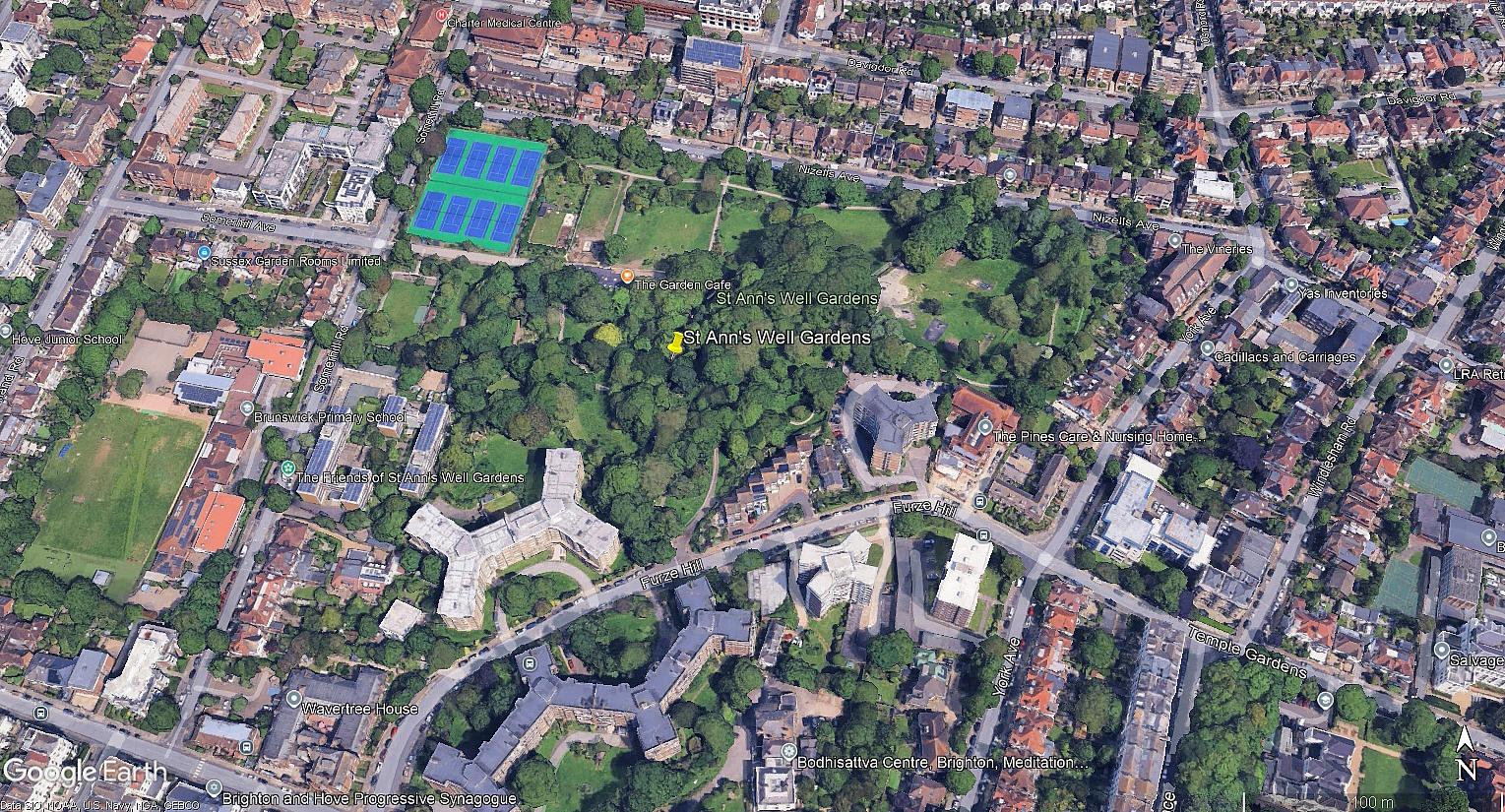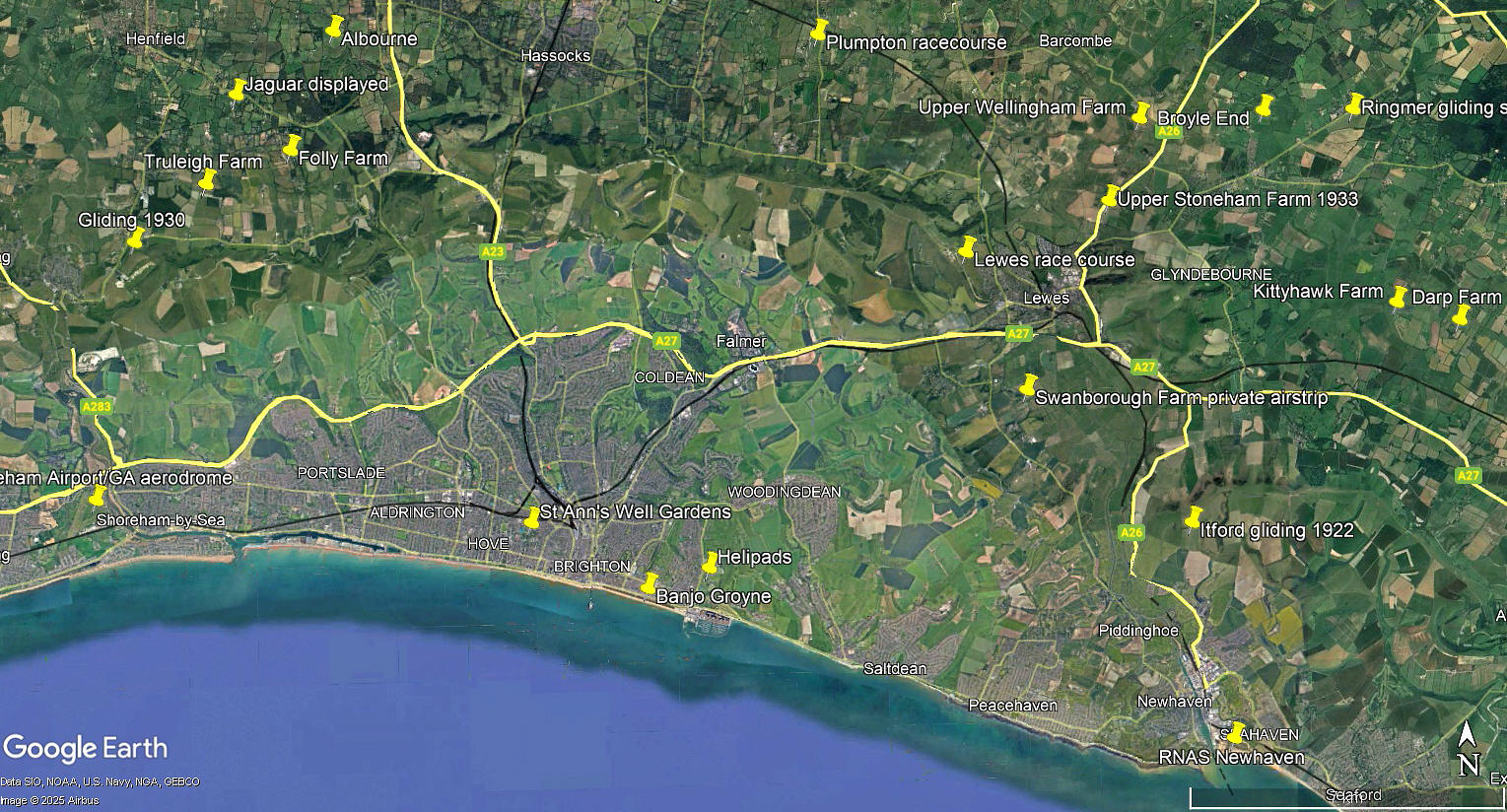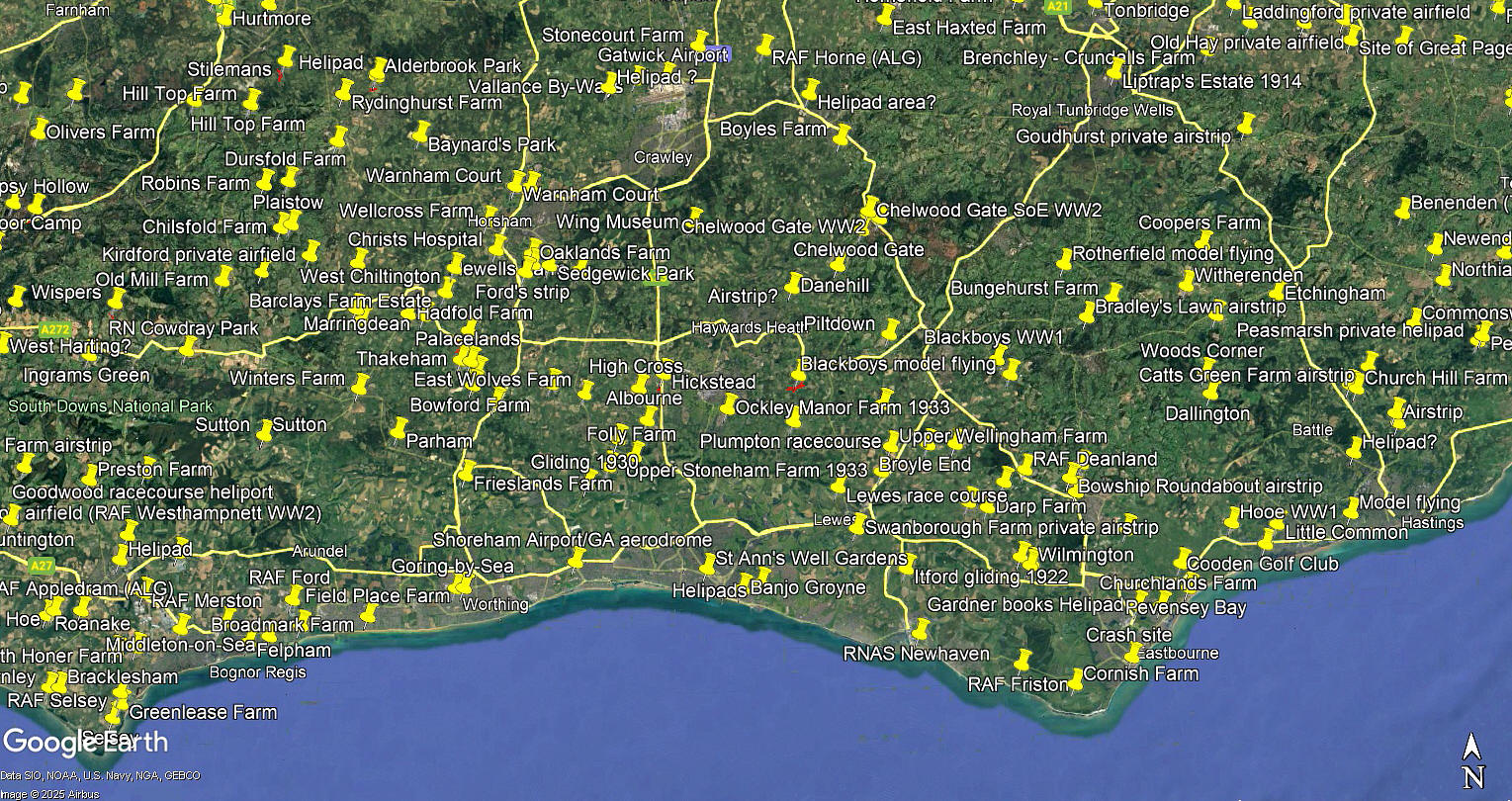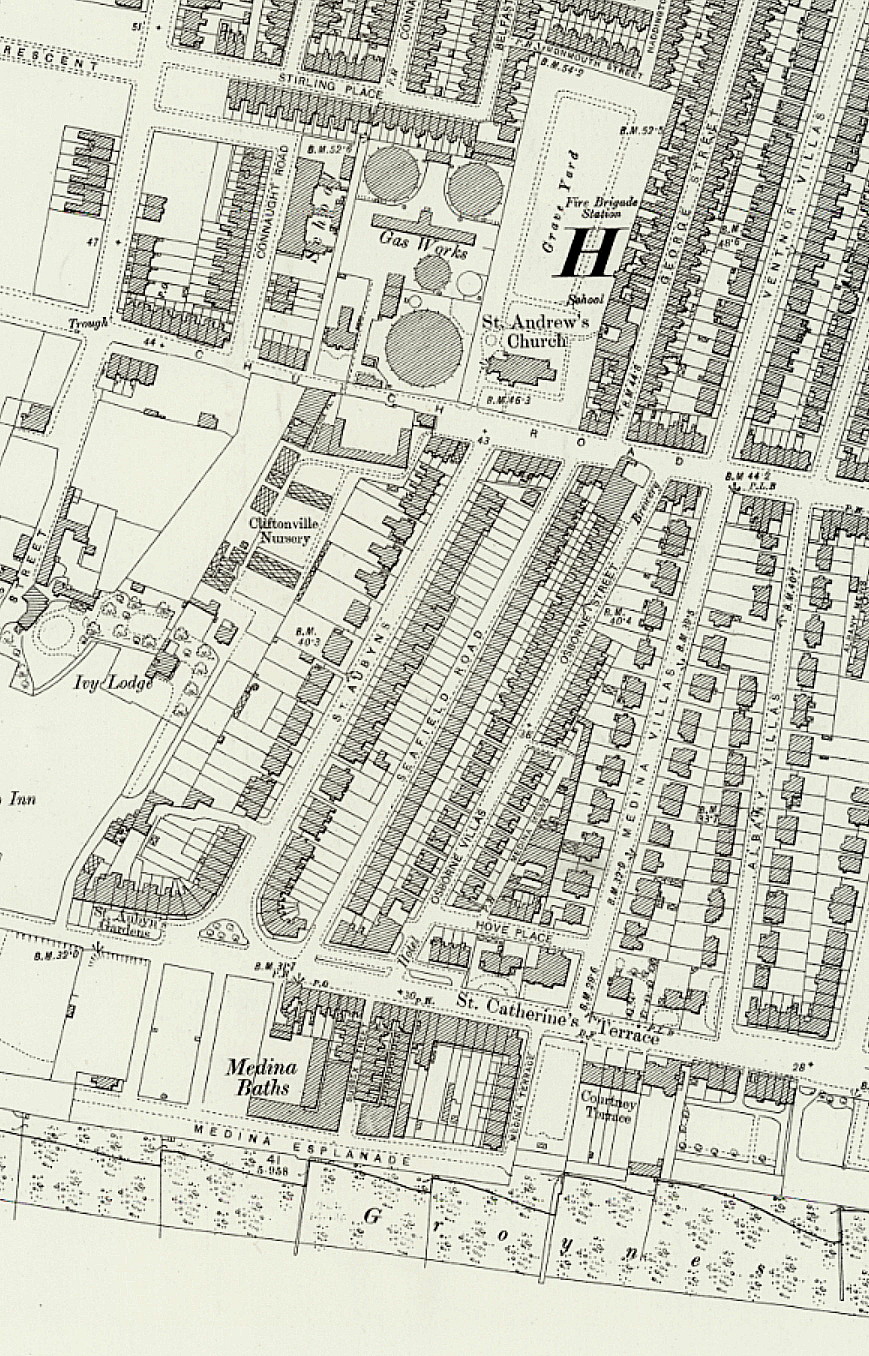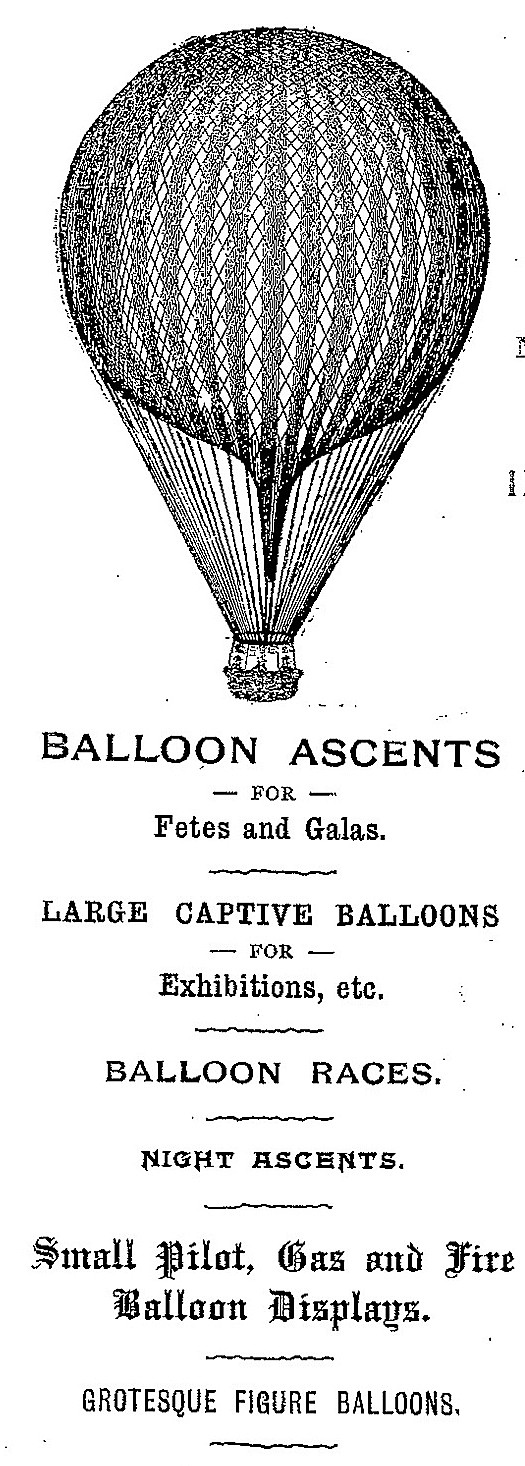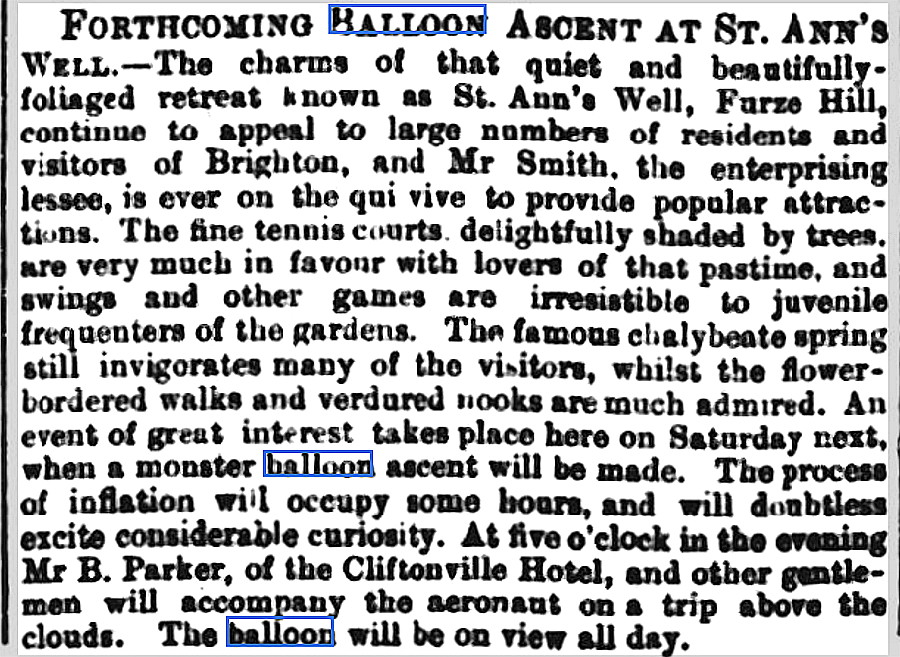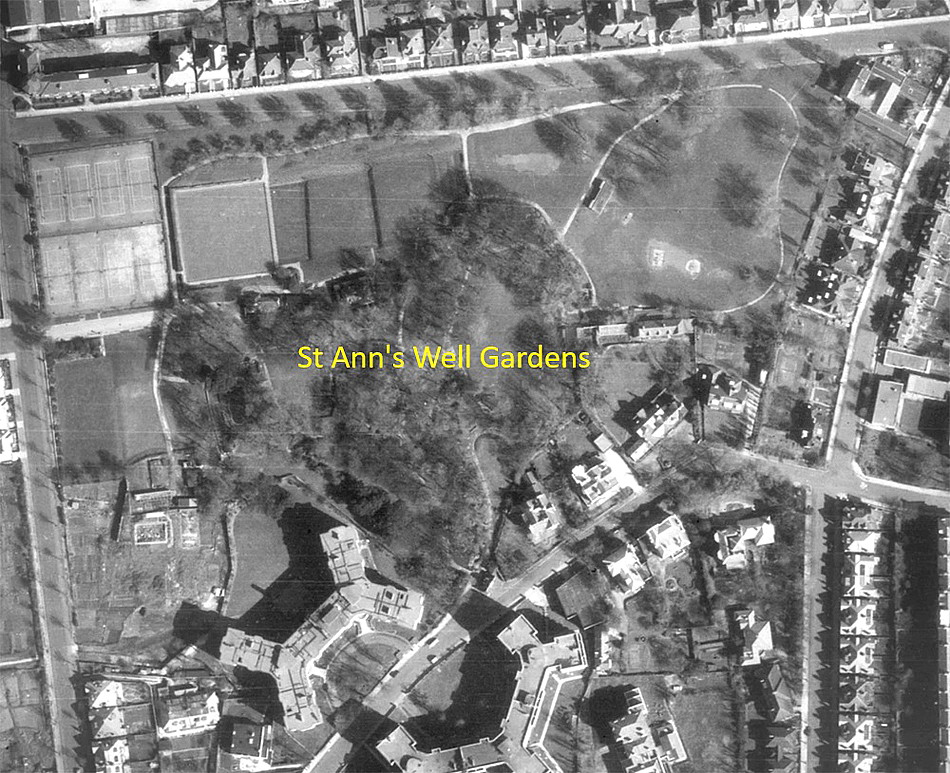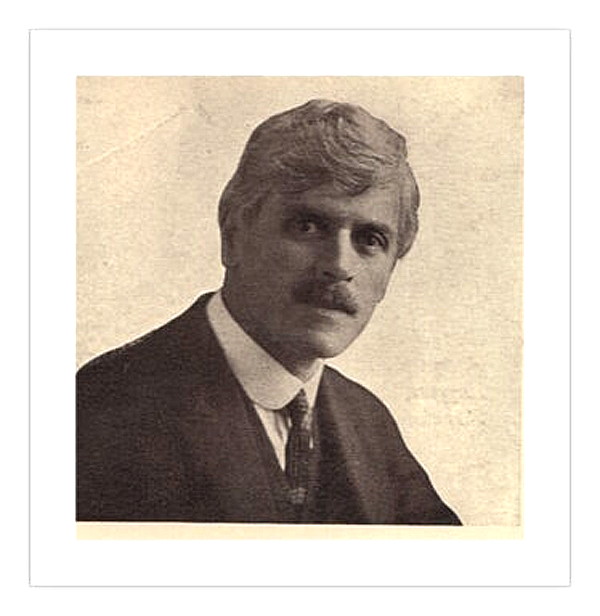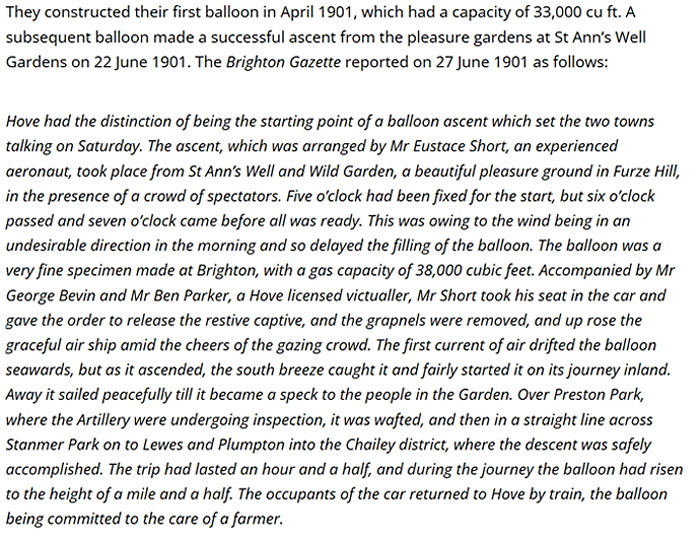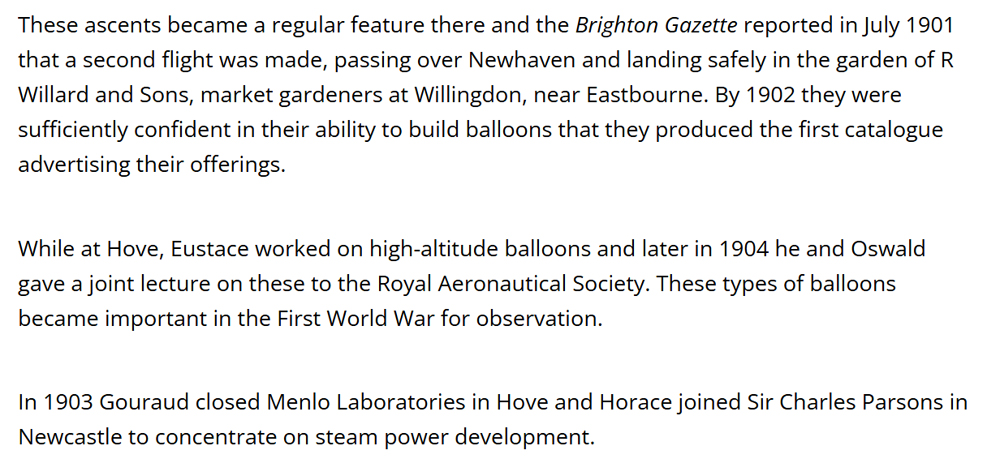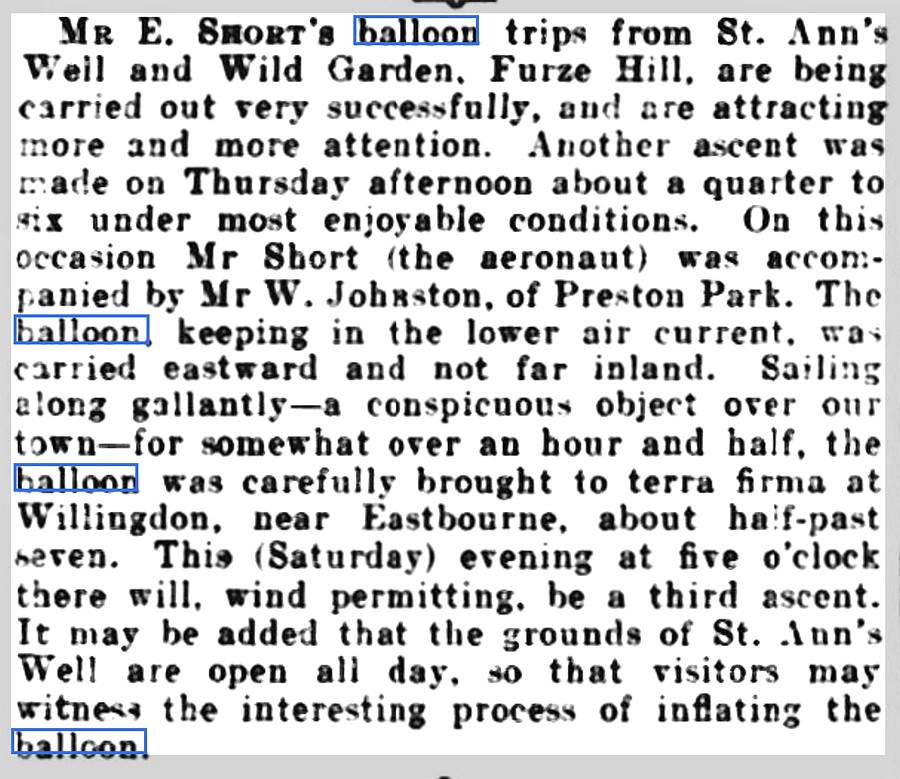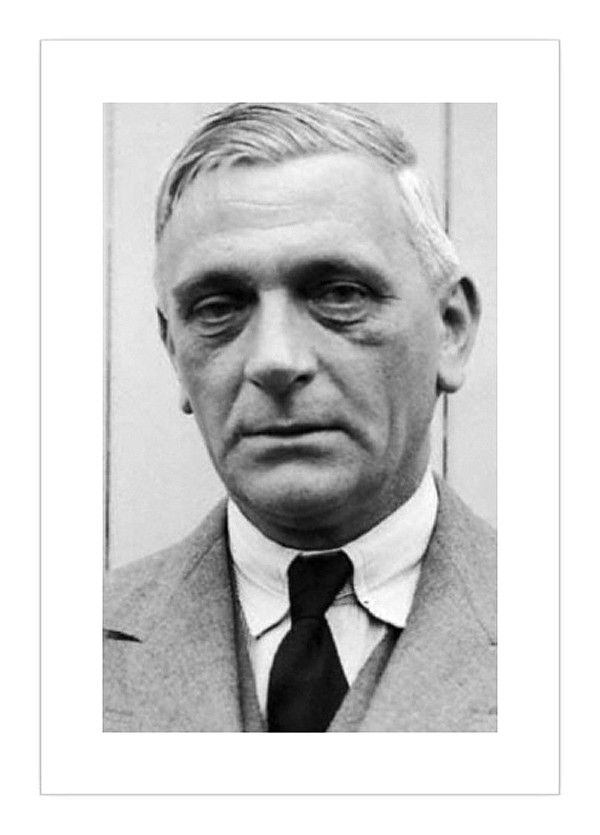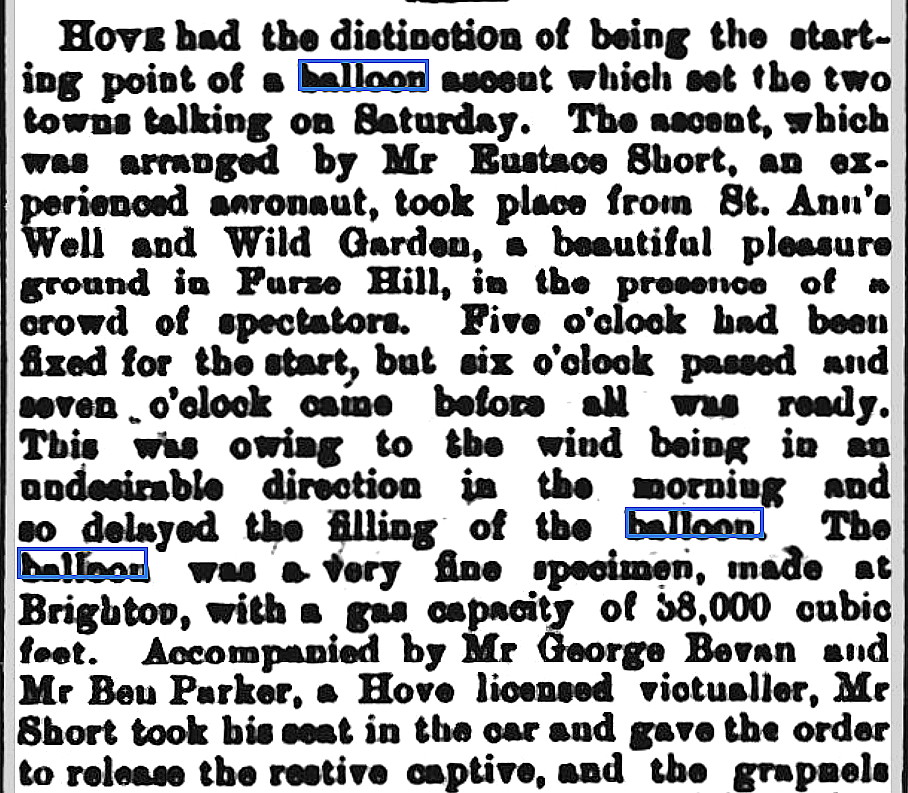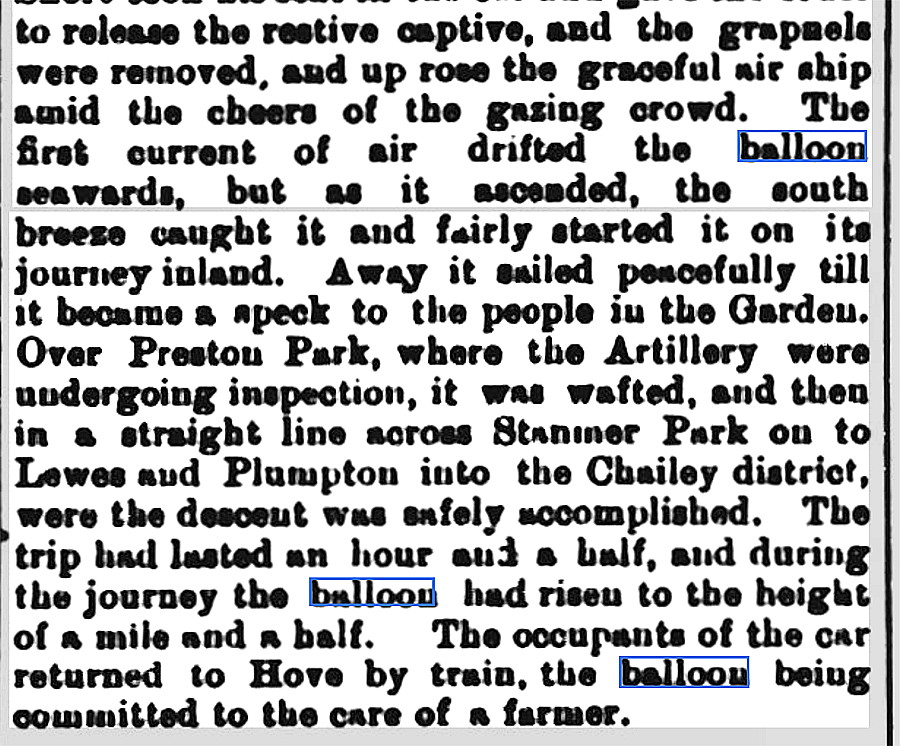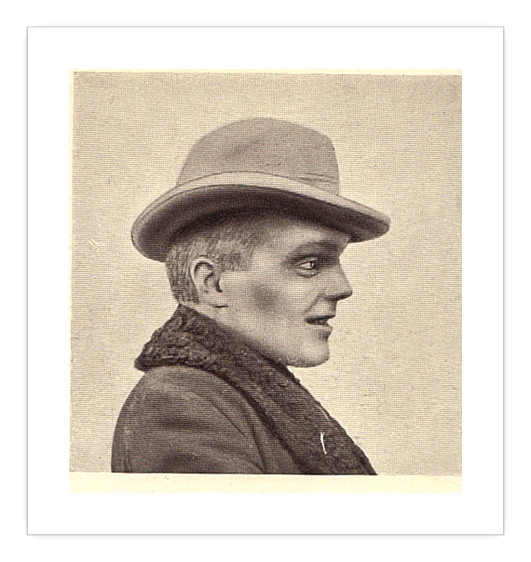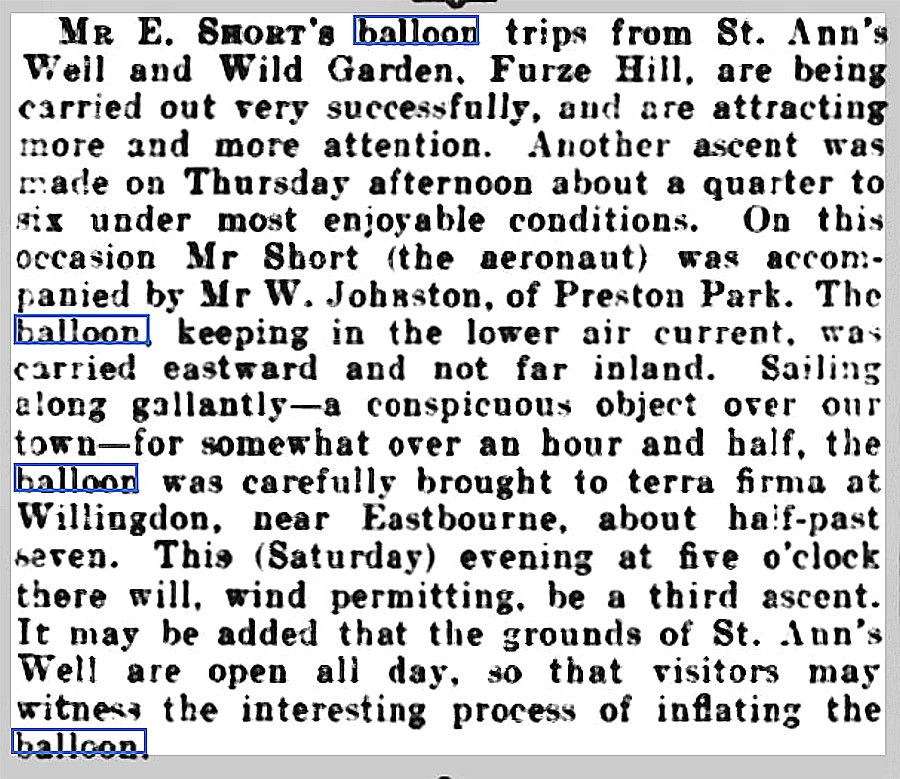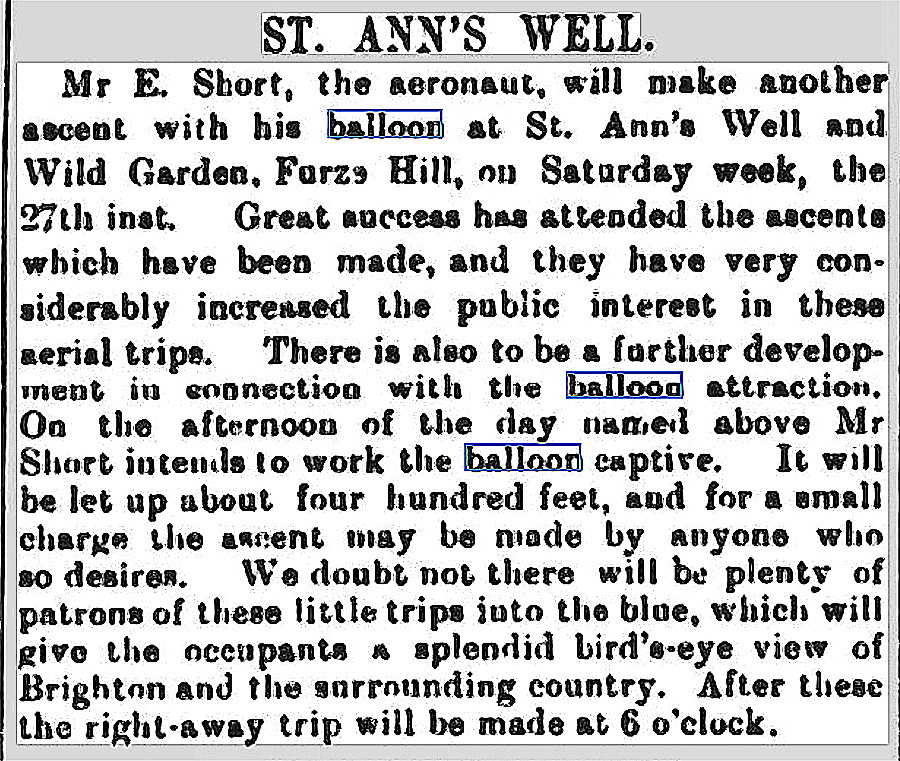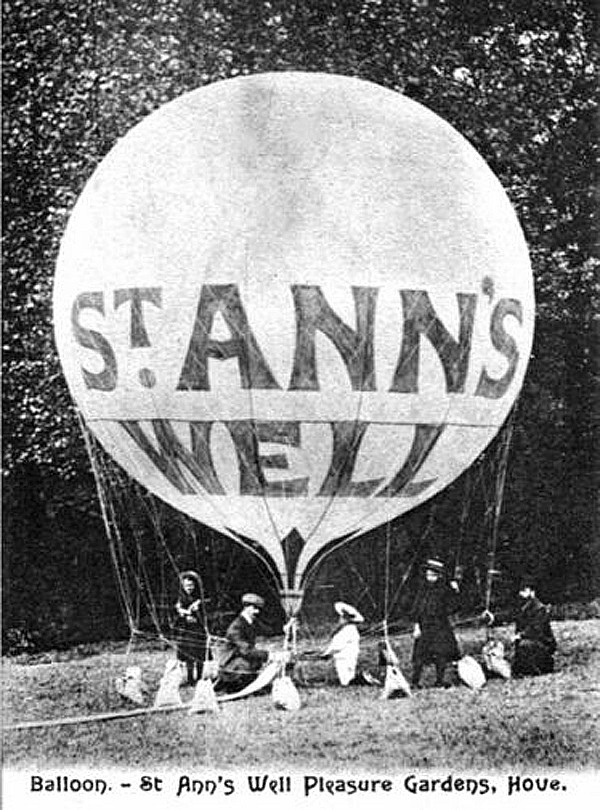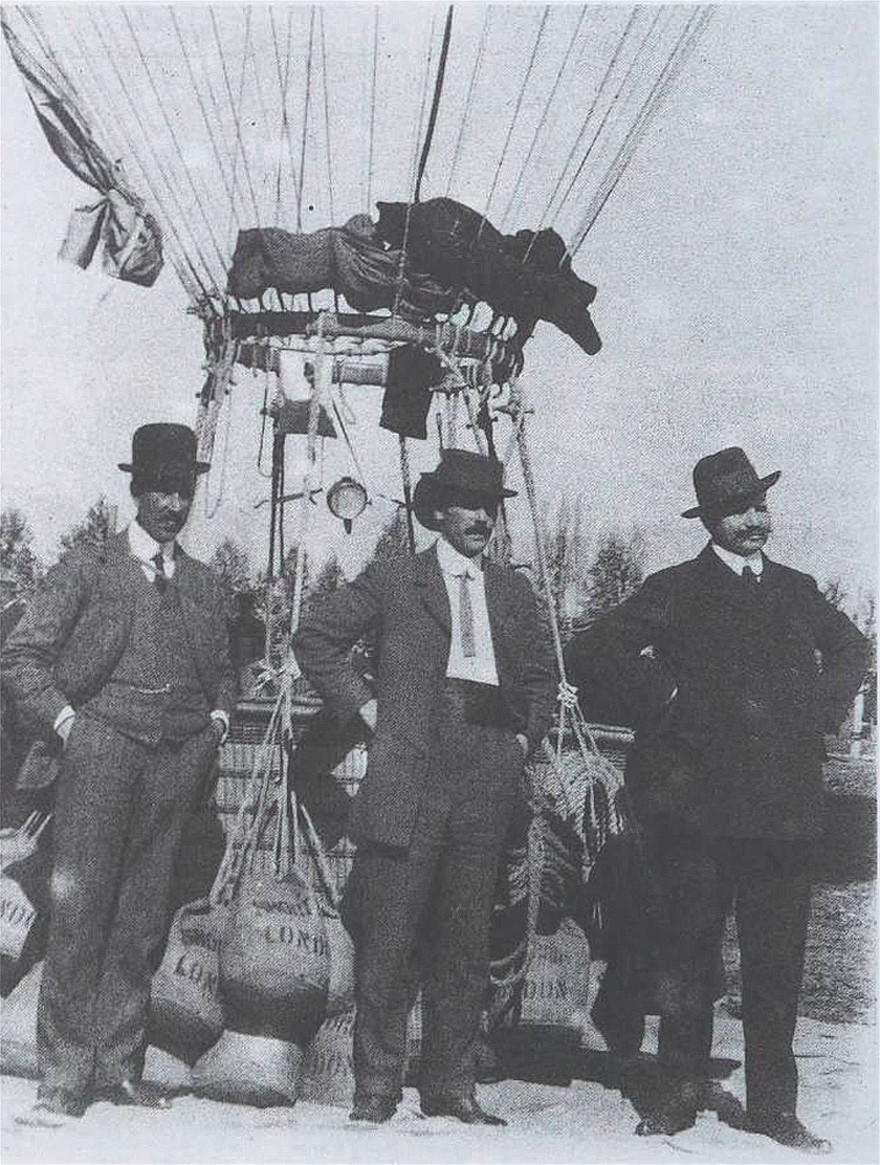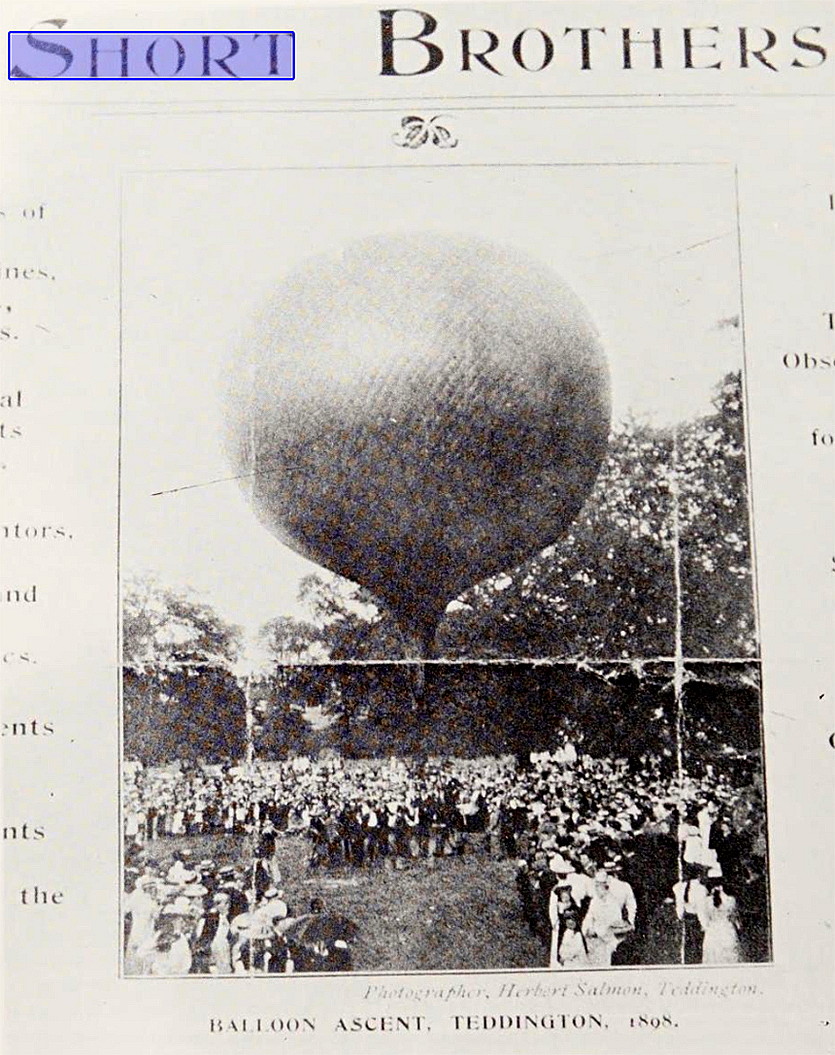St Anns Well Gardens
St ANN'S WELL GARDENS: Balloon launching site
These three pictures are from my Google Earth © derived database.
Operated by: Eustace and Oswald Short
Note: It would appear that the third Short brother, Horace, was not involved in these proceedings? (See last item). The three Short brothers later formed the famous Shorts company, starting to build aeroplanes from around 1909/10, and later becoming globally famous, especially, for their flying boat designs. They also designed the first trend setting four-engine heavy bomber for the RAF in WW2 - the Short Stirling.
Location: In Hove, just W of Brighton
Period of operation: 1901 to 1903
NOTES: We have Mr Graham Frost, a long term friend of this 'Guide', to thank for pointing out this location. He noticed that recently (in 2025), a 'blue plaque' memorial to these two Short brothers has been erected in St Ann's Well Gardens.
Talking as just a private pilot, I reckon that, although ostensibly creating much local interest, and custom, operating balloon flights for local sightseeing trips so close to the coast, was not a good idea. As is well known, on warm summer days, the general rule is that, as the land warms up, an inland breeze develops. But, stronger winds arriving at short notice, from various directions can easily overcome these, and being blown out to sea in a balloon is not at all welcome. Perhaps the reason why this enterprise only lasted for a couple of years or so?
Trying to predict stable weather conditions in our green and septic Isle has always been fraught with problems. Even when I was flying, with very good weather forecasting available, they were sometimes way off the mark. Hardly surprising I suppose, being anchored on a fairly small island at the eastern extremities of the Atlantic ocean.
ANOTHER ASPECT
We do not know where, in St Ann's Well Gardens, the Short brothers had their operation. Mike Holder, another long term great friend of this 'Guide', has provided this map of the local gas works, which was roughly 0.75nm away. So, unlike their main location in BATTERSEA, from 1903 in London, next to a large gas works, it would appear that they had arranged for a feeder pipe to be installed from the nearest gas main.
MUCH MORE INFORMATION
We have Mike Holder, who at my request, very kindly looked into what else might be available - and there certainly was - mainly from two sources. These being the Brighton Gazette and The Regency Society of Brighton and Hove = RSBH.
Article One was published in the Brighton Gazette on the 13th June 1901. I was interested to see that, in their advert, the Short brothers were also offering hot-air balloons.
Article Three was published in the Brighton Gazette on the 20th June 1901, and Article Four in two parts, on the 27th June.
Article Five was published in the Brighton Gazette on the 6th July 1901, whereas Article Six appeared on the 18th July. Then the trail seems to fade out.
Yet another opportunity for me to show to the world how little I know - especially about balloons. Looks to me to be fully inflated? If so, looks far too small for people carrying purposes, especially being 'powered' by coal gas as the lifting agent? By far less effecient compared to hydrogen and helium of course, but relatively cheap and readily available in those days. Note what appears to be, something like a flexible 'water-hose' used by fire brigades, presumably the coal gas supply?
If so, and very much guessing of course, could this be one of, if not the first (?), example of a tethered balloon being used for advertising purposes?
THREE ITEMS FROM: Pioneers of the Skies by Michael Donne.
Later, after this listing was included in this 'Guide', Mike Holder came across these items. Note the second text item which certainly explains why Horace Short was not taking any part in the St Ann's Well Gardens enterprise.
Note: Picture One was taken at St Ann's Well Gardens. It would appear that the Short brothers registered their first business as manufacturers and operators of balloons in Hove during 1901.
Which begs the question about by whom, and where, the large balloon seen at Teddington in 1898, was made. It may well have been purchased from one of several balloon manufacturers around at the time, certainly aiding the demand from around the 1890s, by the wealthy to indulge in ballooning as a sport. Up until WW1. (See listings for HURLINGHAM CLUB and RANELAGH CLUB in south-west London).
BRITAIN LED THE WORLD
What is today generally not known, (and nobody, of many I have quizzed over the years), knew anything of this, is that Britain led the world in ballooning for most of the 19th century. Basically it all came about during the industrial revolution, when gasworks were being built in most towns and coal gas, (not a very efficient lifting agent), became more widely available and relatively cheap. So, when a new gasworks was built, usually quite small, a couple or so enterprising concerns would contact the local council, Chamber of Commerce, etc, and ask if they would like a balloon ascent to take place?
Invariably the answer was, "Yes, please!" Usually many thousands would be attracted to the event - as almost nobody, if any, had ever seen a human being in the sky. Obviously a huge money-making opportunity for local business, but, a secure and sheltered place had to be found for inflating the balloon, which often took days - up to four days. A castle courtyard was ideal, but often an arena was constructed, and of course a gas pipeline had to be laid.
It has been reported that sometimes the aeronaut would risk his life when launching in brisk winds, rather than face almost certain death by an enraged mob, many of whom would have walked all night , to witness the event.
We'd love to hear from you, so please scroll down to leave a comment!
Leave a comment ...
Copyright (c) UK Airfield Guide















